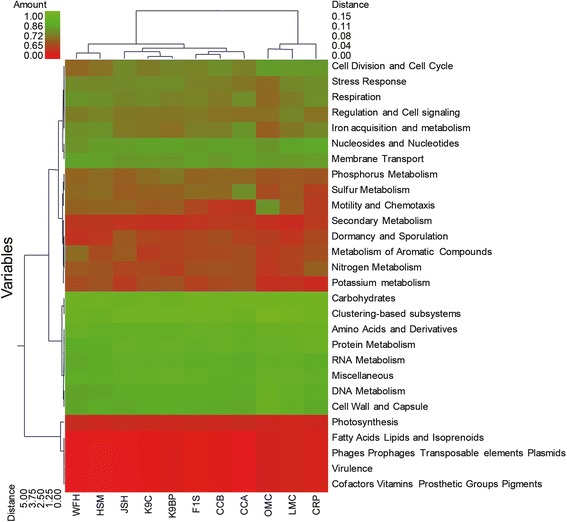Figure 4.

Metabolic clustering of R. bieti , pygmy loris, human, mouse, canine, cow, and chicken gastrointestinal metagenomes. A double hierarchical dendrogram was established through a weight-pair group clustering method based on the non-scaling Manhattan distance. The dendrogram shows the distribution of the functional categories among the eleven metagenomes from the seven different hosts, including R. bieti (JSH), pygmy loris (WFH), humans (HSM and F1S), murine (LMC and OMC), canine (K9C and K9BP), cow (CRP), and chicken (CCA and CCB). The linkages of the dendrogram are based on the relative abundance of metabolic profiles. The heat map depicts the relative percentage of each category of function (variables clustering on the y axis) in each sample (x axis clustering). The heat map color represents the relative percentage of functional categories in each sample, with the legend indicated at the upper left corner. Branch length indicates the Manhattan distances of the samples along the x axis (scale at the upper right corner) and of the microbial classes along the y axis (scale at the lower left corner).
